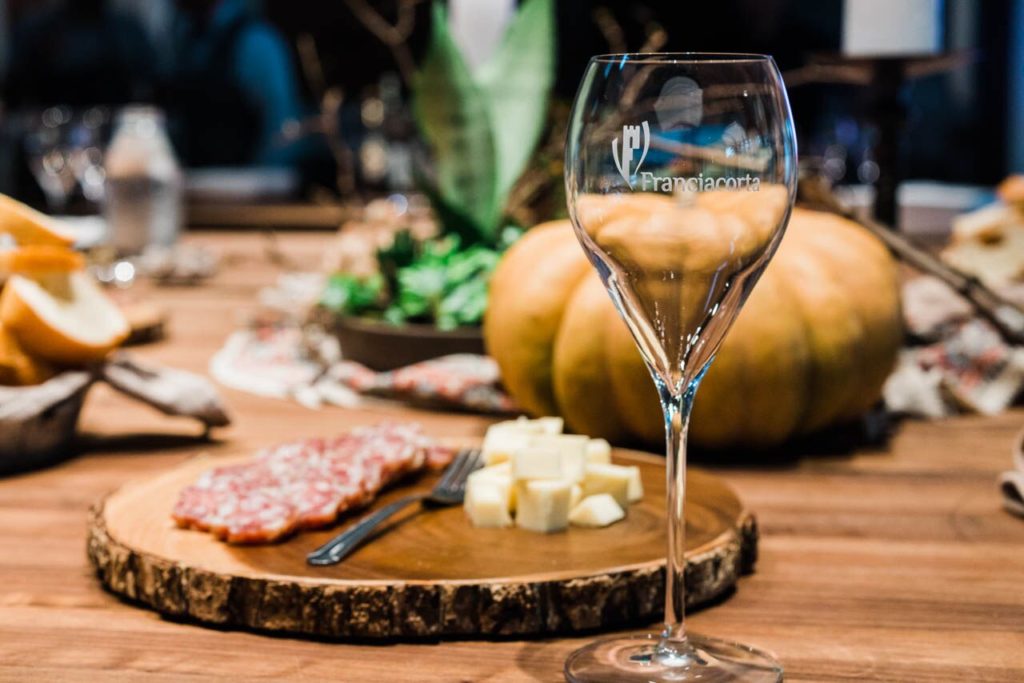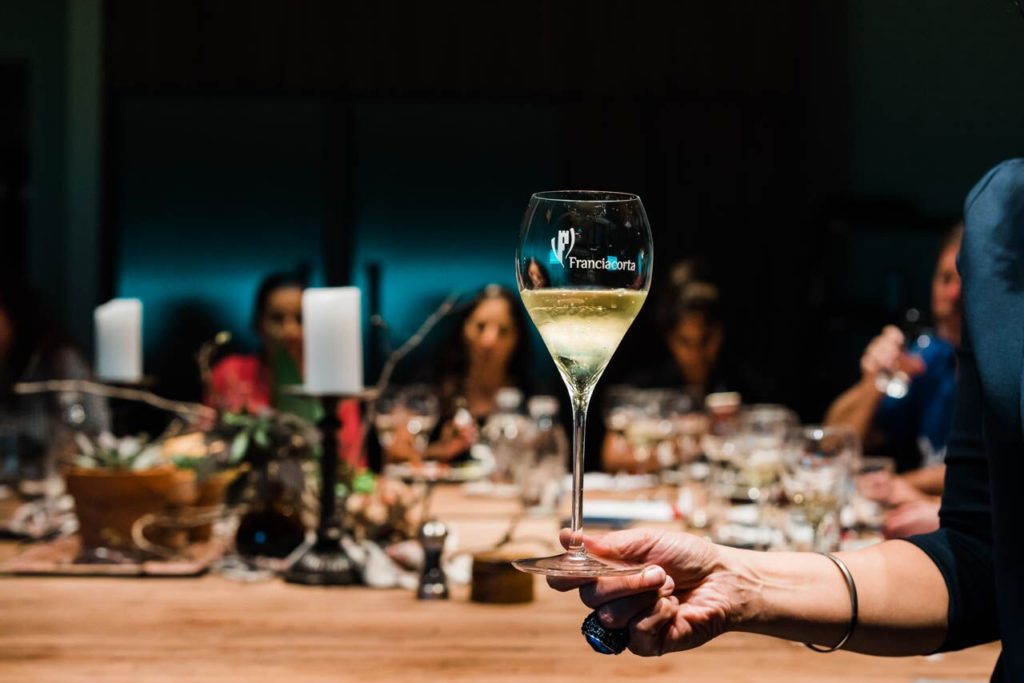While wine (made with fermented rice and honey) was found in yellow river valley of China as early as 7000 BC, the earliest archaeological evidence of grape wine production has been found at sites in Georgia (c. 6000 BC), Iran (c. 5000 BC), Greece (c. 4500 BC), and Sicily (c. 4000 BC). It wasn’t until the age of enlightenment, commencement of American and French revolutions in the Georgian era, did demarcating of wine regions commence (1737 Tokaj, Hungary).
While commercial still wine production dates back to the Roman Imperial era, bubbles didn’t become fashionable until mid 1800s, in part due to innovations in the wine industry including bottle making and better understanding of secondary fermentation. Champagne production jumped from 300,000 bottles in 1800 to 20 million bottles by the 1880s. That’s one century and counting of honing their skills.
Speaking of sparkling wines, did you know no other country boasts as many sparkling wine appellations as Italy? Over 100 including Italy’s most prestigious sparkling wine “Franciacorta”.
Franciacorta has been an overnight success, as few regions have been able to establish themselves to this extent in just 50 yrs. Well known and more popular than Champagne in Italy, it’s modest in recognition and market on a global scale – Tom Stevenson, World Encyclopedia of Champagne and Sparkling Wines.
Franciacorta’s 117 producers secret of success is their dedication, driven by passion and unwavering pursuit of perfection to craft, high-quality wines not quantity, especially in relation to price. Moet Chandon, renowned Champagne house produces 26 million bottles annually, while the entire region of Franciacorta’s annual production was 17.1 million bottles in 2016. Now that’s what we call, limited edition bottling, and mind you at fraction of a price!
Quality is not only paramount to Franciacorta, it directly corresponds to their identity. Based on a relentless set of standards, Franciacorta earned the distinction DOCG (the pinnacle of quality and benchmark of regions best wines) as early as 1995. All 117 producers unanimously (getting Italians in to agree on one thing in itself is an achievement worthy of a medal) as a community, embrace strict production regulations, geographical restrictions, and clear labeling rules to guarantee integrity and quality, rendering Franciacorta as the leading sparkling wine of Italy.
The quickest way to discover and fall in love with Italy is through the dinner table. So what could be more befitting than hosting the inaugural Franciacorta Florida Master Class with one of the pioneer’s of CFL’s culinary landscape – Chef Kevin Fonzo. Who has not only elevated our palate for the last two decades, he continues to shape our future generation by inspiring kids to live healthier lives via cooking classes and science education – Edible Education Experience.
And since Italian wine is best savored with a side of delicious food and friends, we invited some of Orlando’s finest food and wine professionals to explore Franciacorta. That is: Franciacorta the wine; Franciacorta the region; Franciacorta the production method, involving secondary fermentation in the bottle aka traditional method aka metodo classico.
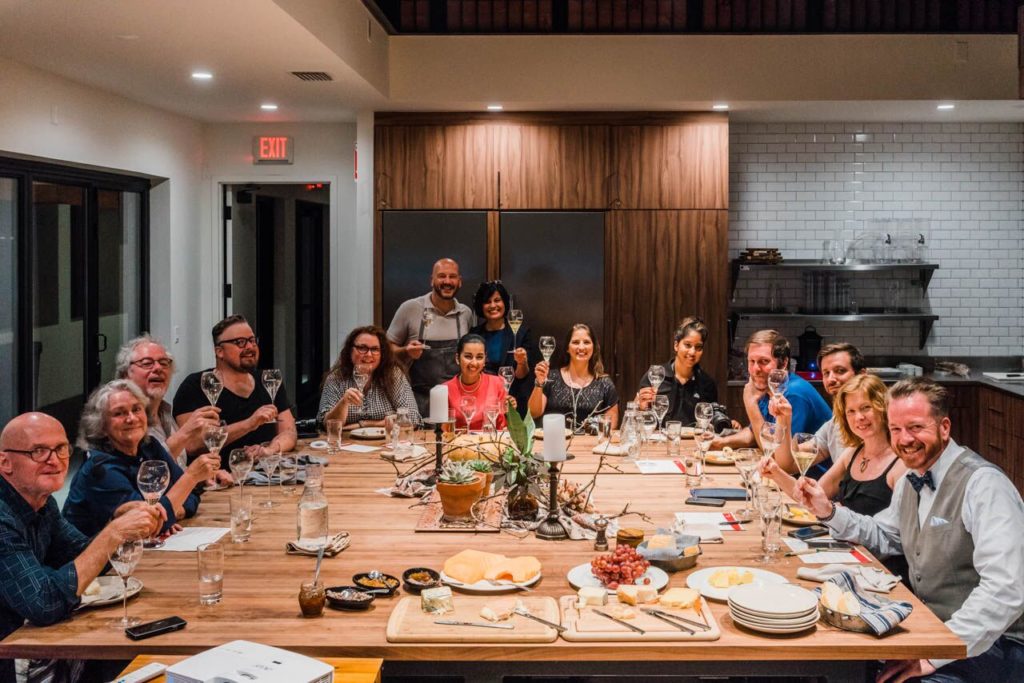
Wine Flight 1:
Why it works: Salads can be a real wine killer as most dressings are tart. The wine that obviously comes to the rescue is sparkling wine. Franciacorta Extra Brut swaggers high acid as well as ideal fruit ripeness and just a few grams of sugar (2.8-3.8) to balance and complete the experience.
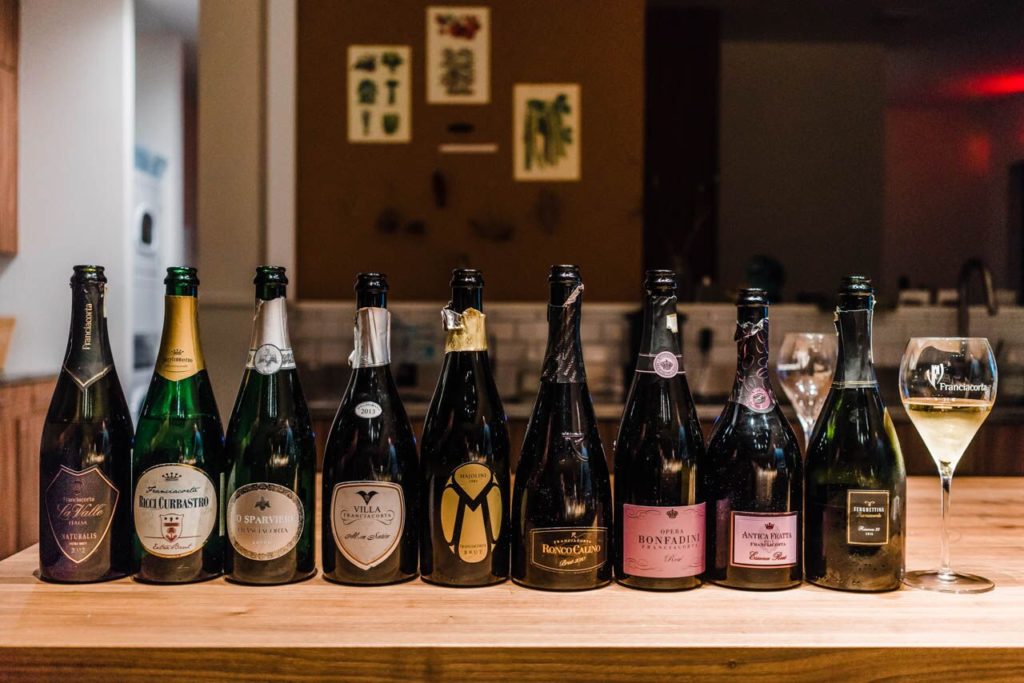
Sustainability: Franciacorta’s commitment to sustainability is commendable. Out of 117 producers, 37 are already certified organic, including one bio-dynamic producer 1701 Franciacorta. The ambitious goal is to become 100% certified in the next 5-6 years. Now that’s quite a challenging undertaking, considering it takes minimum 3 years to convert. Sowing the seeds of sustainability as recent as 2002 was – Franciacorta Barone Pizzini, the first organic winery in Franciacorta. Through a combination of organic farming and cool climate fruit, the wines of this remarkable estate achieve a balance and purity of the highest caliber.
They firmly believe they are custodians of their land, and their duty which they fanatically revere and pursue, is not just to maintain, but to hand over their little slice of heaven to the future generation in better shape than when they received it.
Case and point – Franciacorta producer/winemaker Dr. Riccardo Ricci Curbastro, a staunch stalwart of sustainability and green earth, tackles greenhouse emissions the main culprit of climate change, by investing in renewable energy for all aspects of vineyard and wine operations, becoming 100% self reliant. By applying the same principles to their every day lives including employee transportation, office, manufacturing, and shipping supplies they have managed to earn the “Ita.ca ®” certification. And the results: 5,000+ trees or about 18 acres of woodlands worth of CO2 was seized!
We can truly state: drinking a bottle of Franciacorta Ricci Curbastro is also good for the environment.
Wine Flight No 2:
Franciacorta Lo Sparviere Satèn: Chardonnay 100%, 24 months on lees.
Franciacorta Villa Franciacorta Satèn 2013 – Chardonnay 100%, 36 months on lees.
Pairing: Linguine Clams with garlic bread crumbs. Mediterranean Mussels.
Franciacorta’s unique contribution to the world of sparkling is Satèn (trademarked). Satèn aka Blanc de Blanc is made only with white grapes (Chardonnay + max. 50% Pinot Bianco); minimum 24 months lees ageing; and can only be made Brut (0-12 gm/l rs). Part philosopher, part poet, the winemaker of the breathtaking Bellavista winery, Mattia Vezzola is the architect/creator of Satèn‘s graceful style, that is one atmosphere less pressure, resulting in a soft, silky mouthfeel. Between you and I, its the ideal food-pairing wine.
The tactile expression of 4.5 atmospheric pressure (compared to 5-6 for sparkling wines), is achieved by adding less sugar during triage/dosage. The lower levels of sugar (20 vs 24gms for Champagne), produces less alcohol and less CO2 during secondary fermentation, resulting in lower pressure.
Why it works: What grows together, goes together. Brimming with tench, eel, sardines, and other lake Iseo creatures, seafood is a natural pairing for Franciacorta. Satèn by design is a great accompaniment for Italian summer dishes. The freshness and salinity of Brut Franciacorta stood it’s ground to garlic and richness of olive oil in the linguini clams with garlic bread crumbs while the silky texture of Satèn mirrored the sweetness of the mussels.
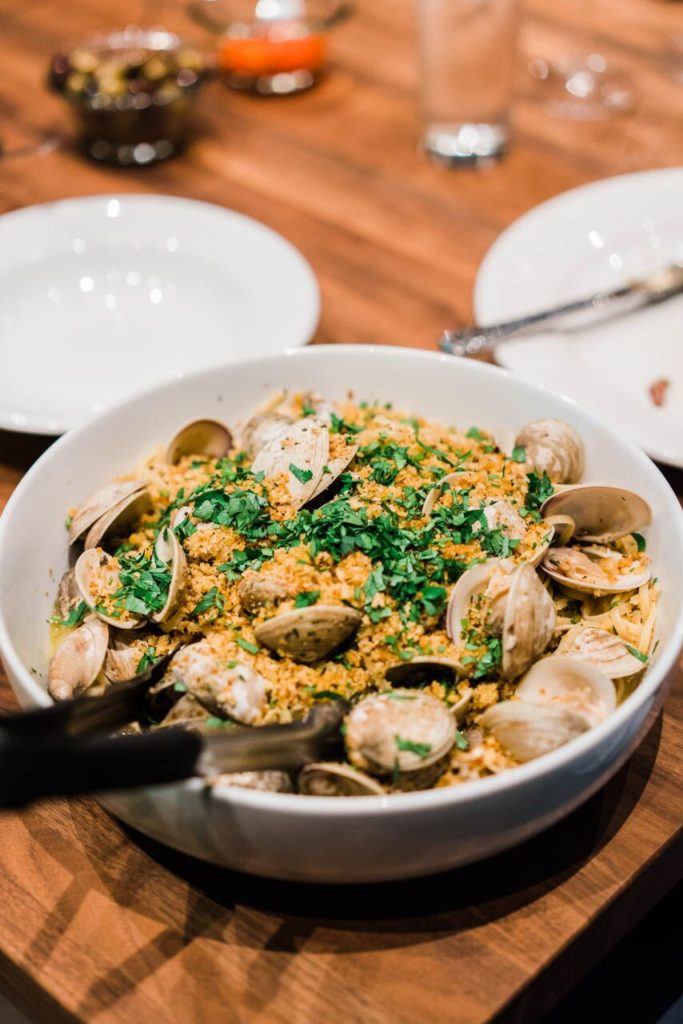
Franciacorta Ronco Calino Brut 2010 – Grape(s): Chardonnay 80%, Pinot Nero 20%, Pinot Bianco 5%.
Pairing: Roasted whole snapper with Sicilian ratatouille.
Why it works: With both Majolini and Ronco Calino boasting organic certification and estate fruit, the locally sourced snapper was a no brainer choice for sustenance. Roasting the fish boosted the sweet/nutty flavors of snapper, while the bright acidity of chardonnay-dominant Brut Franciacorta cleans and refreshes the palate, armed to tackle the next course, and some.
Unlike Champagne with their big houses, Franciacorta producers with the exception of few, by and large are boutique family estates. And there are no cooperatives. Ronco Calino, today 16 vintages down, still only makes 5,000 cases. Quality not quantity is key to Franciacorta’s continuing success.
Wine Flight 4:
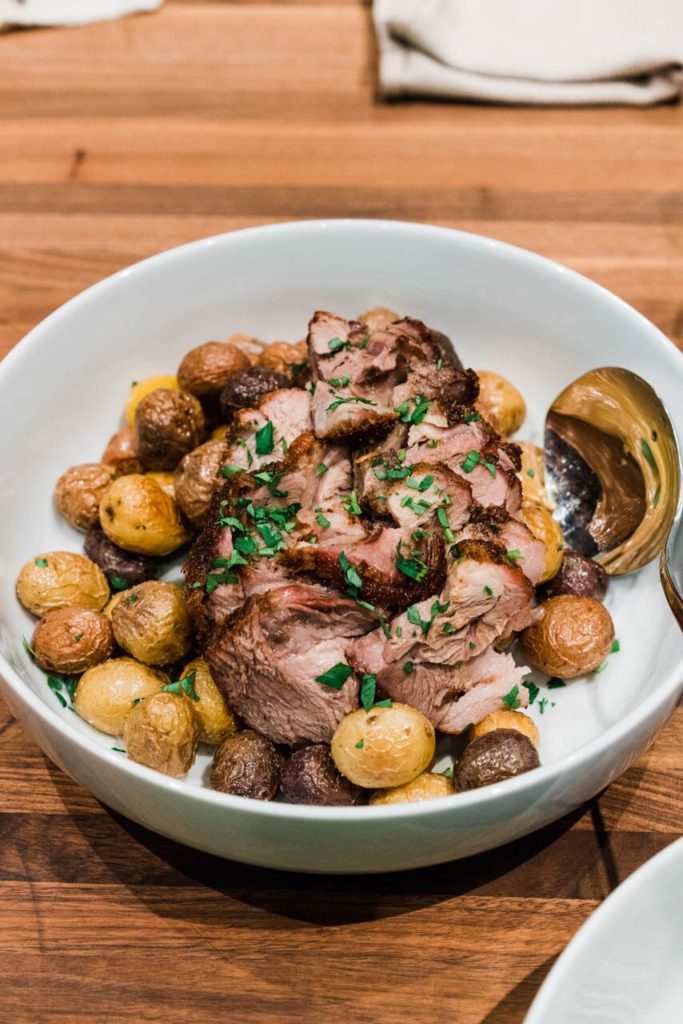
Why it works: I think pink foods (pork) beckons pink wines (rose). And since tomato is a red fruit, wines with red fruit flavors not only compliments the tomato sauce, the vibrant acidity cuts through the richness of the sauce, that balances both the wine and meal. To be considered a Franciacorta Rose, the wine must constitute a minimum of 35% Pinot Nero and maturate for a minimum of 24 months. Sweetness levels range from zero dosage to demi sec (33-50 g/l rs).
Wine Flight 5:
Franciacorta Ferghettina Pas Dose’ Riserva 33 2010. Grapes – 100% Chardonnay. 80 months on lees.
Pairing: Assorted Italian cheeses with fruit. Biscotti and pizzelles with espresso.
Why it works: Decadent, rich, creamy cheese is a great excuse to break out bubbles. Think honey, hazelnuts, ripe yellow/red apples, caramelized citrus that come alive with the effervescence. The richness and complexity of six plus years on lees, lingering minerality, even with zero dosage, promises to deliver maximum pleasure sip after sip without overpowering your palate.
Climate change is real friends – Ferghettina lost 75% of their grapes to frost last year.
There really isn’t any bad wine coming out of Franciacorta. Consistently, they produce higher percentage of vintage wines, thanks in part to the 6 micro-climates and unique soils that allow the grapes to reach optimal ripeness, year after year. Blessed with 64 different soil types, including mineral-rich, well draining sandy soils of morainic origin. Franciacorta is home to some of the most Chardonnay-suited, unique, ancient soils that boast naturally high acidity not masked by modern day manipulations.
Verdict: Elegant, evocative, approachable – swaggering focused fruit, versatile structure that ranges from dainty to powerful, laced with energetic acidity and lingering herbal-mineral nuances, Franciacorta offers maximum flexibility from Pas Dosé to Demi-Sec, that is downright thrilling.
The single recurring note that danced in our minds – Franciacorta is so much more than simply a celebratory wine, it indisputably belongs on the dining table as every day affordable luxury, that marries well with any course or cuisine, be it a family style meal or six-course gourmand culinary experience.
